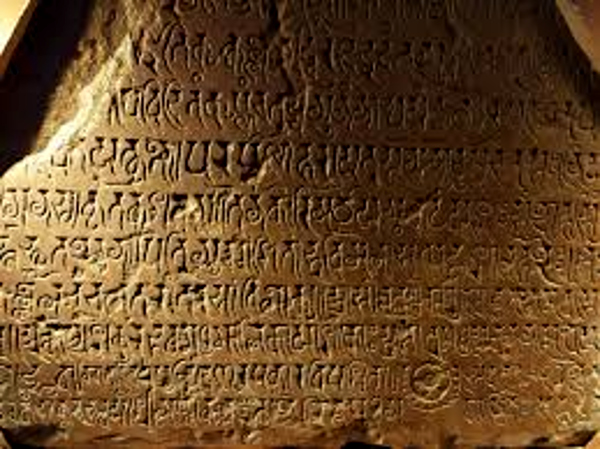An international conference on languages held in Sarawak, Malaysia between February 5 and 8, selected Sanskrit as the language which emits the ‘most positive vibrations’ and ‘spiritually pure in nature’.
The Conference on Asian Linguistic Anthropology (CALA 2020) held at Sarawak analysed the findings on the research held in eight national and 11 international languages and came to the conclusion that ‘languages in written and spoken formats can emit either positive subtle or negative subtle vibrations’.
The scientific research on the spiritual purity of Sanskrit held by Dr Jayant Athawale, Rendy Ekrantio and Sean Clarke of the Maharshi Adhyatma Viswavidyalaya, Goa, and titled ‘Spiritual Vibrations of the Most Popular Languages And their Scripts’ found that languages differ at a vibrational level and have a subtle impact on the people using the language.
The MAV linguistic researchers used aura and energy scanners and measured the subtle positive and negative energies. According to Ekrantio, an Indonesian linguistic researcher, pursuing his research on Sanskrit and other languages in MAV, the team studied the subtle energy released by the translation of the sentence ‘The Sun Rises in the East and Sets in the West’ in eight national and 11 foreign languages. The subtle energy in the print out of sentence in each language was checked.
The languages with the Devanagari script had the most positive readings in contrast to the other languages, which emitted negative vibrations.
‘Sanskrit was found to be the language with the highest spiritual purity, followed by Marathi,’ said Ekrantio explaining the important observations and conclusions made by the team during the research.
To drive home that their findings were not something out of the blue, the scientists translated the same sentence into English, Mandarin and Sanskrit and studied how people’s aura gets affected by these languages.
The sentence — ‘The Sun rises in the East and sets in the West’ and the respective translations in the 3 languages by native speakers of that language were recorded. Two subjects of average spiritual level (which means that they were not doing any spiritual practice) were asked to listen to each recording for 10 minutes.
After listening to each recording the effect of the sentence on the subjects was measured. Neither of the subjects had any psychological affiliation for any of the 3 languages. Both the subjects were negatively influenced by the Chinese and English languages. This means that their auras became more negative.
Along with that, they lost any traces of positivity. However, when they listened to the sentence recorded in Sanskrit their negative aura reduced considerably and they gained a positive aura in just 10 minutes,’ said Sean Clarke, a former officer of the Indian Navy who quit his jobe to pursue his interest in linguistics.
Parapanangadi Unnikrishna Panicker, leading Sanskrit scholar who belongs to the rare breed of students trained in the Gurukul system said that Sanskrit is the most civilised and cultured languages in the world because of its purest form. ‘Those who use the language on a daily basis understand its divinity and purity. This controversy over Sanskrit itself is unwarranted,’ said Panicker.
Ekrianto observed that educational institutions should keep the spiritual purity of the language in mind while choosing or promoting languages to be taught as part of the curriculum. Dr MG Gireeshan, physicist, vice-principal, and head of research, Jai Bharat College of Arts and Science said that he agreed with the findings of MAV scientists.
“The uniqueness of Sanskrit slokas is the sudden synchronization of high and low-frequency sound waves. This leads to a compression in the atmosphere resulting in the formation of positive fields and positive energy,” said Dr Gireeshan who felt this was an area which should be pursued with vigour.
Source: DP
Image Courtesy: Twitter
You may also like
-
India Can’t Afford to Remain Stagnant at this Juncture, Says PM Modi; Asks People to Buy Locally-Made Goods
-
Stolen Artefacts to be Returned to India from Scotland Museums
-
Netaji’s Hologram Statue at India Gate
-
10th Century Stone Idol of Goat Head Yogini IllegallyRemoved from A Temple in Lokhari, Banda, UP Being Returned to India
-
UNESCO Inscribes ‘Durga Puja in Kolkata’ on the Representative List of Intangible Cultural Heritage of Humanity
